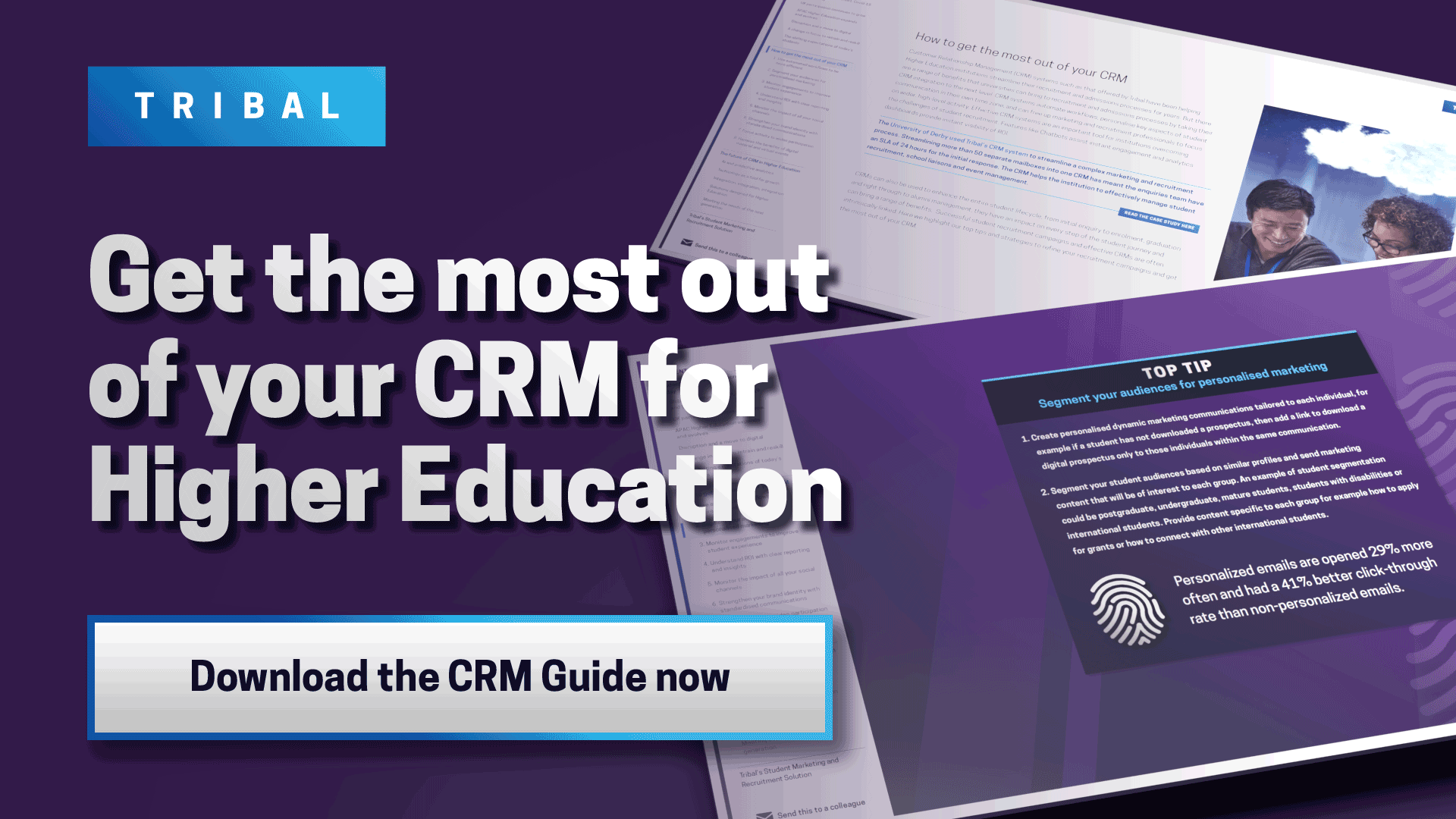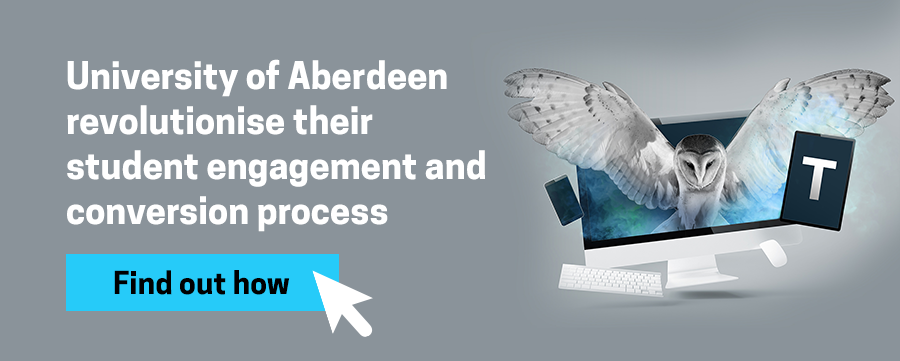Email marketing can be used in many ways in higher education, whether engaging alumni, marketing to prospective students, or informing and engaging current students.
Email is a prevalent marketing tool because of its ability to be automated and the fact that it goes directly into the inbox of the people you want to communicate with. It’s also inherently scalable, so one campaign can engage thousands of potential students. This guide explores our top tips for making the most of higher education email marketing campaigns. It also covers best practice considerations to make your campaigns compliant, effective, and efficient.
Why should higher education institutions use email marketing?
Email continues to be a big part of people’s lives. According to Statista, there were 4 billion global users of emails in 2020, set to grow to 4.6 billion users in 2025. Email marketing is a way of tapping into this audience and communicating your message effectively and efficiently. It’s a powerful way of capturing attention, engaging and informing your students.
Email marketing in education achieves some of the best engagement compared to other industries. Email statistics for May 2022 from Constant Contact show the average email open rate within the education sector (33.57%) was higher than the average for all industries (30.35%). When email marketing is done right, there’s a clear opportunity for growth and bolstering student engagement.
When sent through a marketing platform or combined with a customer relationship management (CRM) tool, email marketing precisely measures campaign success. You’ll be able to monitor who has opened your email (open rates), what content they have engaged with or clicked on (click-through rates), and understand the level of engagement with your campaigns. These platforms are designed to help you make strategic decisions and change/tweak activity for maximum impact, allowing you to be very targeted and achieve your goals by taking a data-led approach.
What are the benefits of higher education email marketing?
One of the main benefits of email marketing in higher education is its variety of uses. Alongside wider communications channels, email marketing can improve engagement with alumni, update current students with crucial information and form the backbone of student recruitment strategies. It can be deployed at every stage of the student journey, improving processes across the student lifecycle.
It’s also a relatively low-cost marketing channel, as a campaign can be used to engage thousands of prospective or current students. Research by Optinmonster found that 58% of users checked their email inbox first thing each day, ahead of both social media (14%) and news (5%). So email campaigns can get you ahead of other marketing channels too.
The benefits of email marketing for higher education include:
- Connecting and engaging with prospective students and alumni.
- Building a strong community and campus identity.
- Reinforcing your culture and values.
- Reminding and informing students about key dates, news or events.
- Nurturing the student recruitment journey.
- Creating personalised and helpful content.
- Improving the student experience.
- Asking for feedback to help shape future strategies and communication.
Our top 7 tips for boosting your email marketing strategies
Email marketing strategies can help supercharge campaigns in higher education. We’ve collated the following email marketing tips to help you boost your email strategy for consideration:
- Look at automating your emails and workflows
- Make sure you are testing
- Create and use email templates
- Focus on the action
- Optimise subject lines
- Segmenting your audience
- Collect the right data
-
Automating emails and workflows
Email automation is when an email campaign is sent when triggered by an event. This could be an automated welcome message or extra information sent to prospective students that downloaded a brochure, for example. These can be relatively complex, as a series (workflow) of multiple emails can be automated.
You need the right supporting technology, such as a CRM system, to do this. It can be used to automate emails and workflows throughout the student journey, saving resources and time on manual processes. After the initial set-up, email marketing automation can help improve return on investment, as it saves time and money and continues generating leads for your institution.
-
Testing
Testing should be embedded in two ways: testing templates to make sure they work on popular devices and email providers, and testing campaigns as part of marketing optimisation. Testing templates will help cut down on unsubscribes and improve engagement as a whole, as it ensures your message can be seen and delivered.
The testing of campaigns can help you refine your messaging, content and overall email marketing strategy. By performing A/B tests (split tests), you can measure engagement with specific email changes, highlighting the best way to captivate your audience. This approach allows you to test different parts of an email, such as subject lines or changes to formatting or tone.
-
Creating email templates
Email templates are a great way to achieve consistency across different campaigns. You can build templates including standardised branding, logos, font, colour palettes and imagery so that you can amend the core content for future campaigns. Templating means your emails will remain accessible and on-brand for your institution, and templates can be tested to ensure browser or email provider compatibility.
-
Focusing on the action
As part of your strategy, it is essential to establish the action you want an email recipient to take, such as an event sign-up, a click-through to a prospectus, or engagement with a news item. Embed clear calls to action, such as buttons in your email campaigns, to attract readers to the main aim of the email.
-
Optimising subject lines
Subject lines are essential, as they can differentiate between your audience opening or ignoring your email. Subject lines should be kept short and descriptive so that information isn’t lost on smaller screens and mobiles. Mailchimp recommends subject lines should be no more than nine words or 60 characters in length. They should also be personalised with merge tags whenever possible.
-
Segmenting your audience
Audience segmentation means grouping subscribers based on similarities such as interests, location, demographics, or levels of engagement with previous campaigns. This allows for more personalised email campaigns and, as a result, a higher engagement rate. Mailchimp statistics on segmented campaigns find that open rates are 14.31% higher than non-segmented campaigns and clicks 100.95% higher. Segmenting an audience by different data points is one of the best ways to make the most out of a higher education CRM.
-
Collecting the correct data
Subscriber data is vital for personalising emails and segmenting an audience. It is worth trying to unify the data fields you’re collecting from different sign-up forms so that your audience lists have the exact dimensions. This will make audience segmentation much more manageable and increase the granularity of reporting.
Higher Education email best practice
There are some key best practice pointers to consider when managing and planning an email campaign for higher education. Keep these in mind when planning your email marketing strategies to lower the risk of privacy issues or spam policies.
Best practice for email marketing includes:
- Maintaining GDPR compliance
- Monitoring the frequency of campaigns
- Data cleansing
- Content personalisation
Maintaining GDPR compliance
GDPR and the Data Protection Act should be a consideration for any email marketing your institution performs. Most importantly, your institution must provide the ability to opt-in and opt-out of communications and marketing lists. The critical part is gathering consent for your email marketing campaigns, which will lead to a more engaged subscriber list.
Monitoring the frequency of campaigns
Sending too many emails to a recipient may lead to disengagement, burn-out for your brand, and an unsubscribe. It may even land your campaign in the spam folder. Email marketing benchmarks by GetResponse found open rates generally drop as more newsletters are sent within a week, so there are depreciating returns. The correct number will differ between institutions, so focus on monitoring and measuring frequency.
The same GetResponse study found that sending emails on a weekday and during business hours is best practice. Remember to take a holistic view and keep track of the number of emails an individual may receive from your institution across different campaigns or automation.
Data cleansing
The success of email marketing relies on the quality of data, especially when segmenting audiences or automating campaigns. Providing an unsubscribe link in campaigns is mandatory, but also providing subscribers with the ability to update preferences can help keep data up-to-date. Ensure your CRM system doesn’t email unsubscribed contacts on your list and keep track of undelivered emails to identify bad contact information.
Content personalisation
Email personalisation lowers the risk of emails being marked as spam, as each individual email will be different. Simple personalisation, such as using the student’s name, can help improve engagement. Tagging your subscribers based on interest, demographics or location can help send only the most relevant content. Personalising the content of email campaigns by location is especially important for attracting international students.
Email marketing with an education CRM
Tribal’s Student Marketing & Recruitment solution is an education CRM that revolutionises the student recruitment and marketing process. Our platform can streamline all areas of your marketing strategy, including email campaigns. We’ll help ensure a return on investment across every platform.
With detailed audience segmentation and seamless automation, you can unify your marketing and recruitment with Tribal.
TOPICS:
Student Marketing & Recruitment
SHARE THIS ARTICLE:




